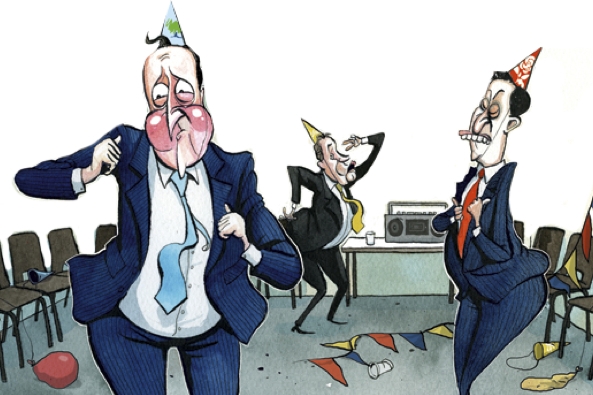This was a landmark week in this long election campaign. It was the first this year in which two pollsters (YouGov and Lord Ashcroft) each posted a Conservative lead outside of the margin of error. A 4 per cent lead for the blues may not sound like much – but it represents the largest Conservative lead on YouGov in more than three years.
Indeed, of the 12 polls published so far this March, Labour have led in just 4 – compared to 27 leads out of 39 throughout February. It may be nothing. But I somehow suspect otherwise.
If you said to me following the 2010 election that Ukip would have been on 15 per cent, the Liberal Democrats would have collapsed to single figures – and still, Labour would fail to have a poll lead – I wouldn’t have believed you. The extent to which the partisan fundamentals favour Labour are difficult to overstate.
In truth, however, it isn’t just that Ed Miliband has failed to seal the deal with the British public – his party would seemingly rather he was brushed under the table entirely – leaving the question as to the occupant of 10 Downing Street unanswered until roughly 8 May. There is mounting evidence that CLPs are far from keen to see their leader appear in leaflets and it’s not hard to see why: YouGov’s ‘preferred Prime Minister’ tracking poll has put David Cameron 18 or 19 points ahead in every survey conducted so far this year.
Does any of this matter? I take the view that pre-campaign polls are the equivalent of asking a friend, over breakfast, what they plan to eat at a restaurant for dinner tonight. Much as they may instinctively predict they want the lamb, only on entering the venue and leafing through the menu will they see that the way it’s served isn’t actually to their liking.
Facetious? Yes. But months or even years out, poll respondents lack the context in our increasingly presidential politics – and we’ve been here before. Recently, in fact. Amid the yellow tide of nationalism sweeping Scotland, it has to be remembered that prior to the 2011 Holyrood vote, Scottish Labour, led by Iain Gray, had a relatively stable poll lead. Salmond, however, continually led Gray by a sizeable margin in the ‘preferred First Minister’ stakes: a TNS-BMRB poll carried out in late March 2011 found Labour with a 4-point lead, but Salmond with a 23-point lead against Gray.
And we all know how that panned out. As the 2011 campaign went into its final six weeks, partisan polls inched towards the ‘Presidential’ figures – and in what may have been the most consequential vote so far this century, Salmond was catapulted to a Holyrood majority most thought impossible.
[datawrapper chart=”http://static.spectator.co.uk/5PQjC/index.html”]
The same may not happen for Cameron this year. The proportion of voters who instinctively rule out the Conservatives is far greater than the share of Scots who would never support SNP – but they also have far less of an electoral mountain to climb, needing to play defence against Labour in England, but likely to make significant gains against the Liberal Democrats.
Lord Ashcroft is always at pains to say polls are a snapshot – not a prediction. In the coming weeks, we may be about to see why that is so important. We may be at a tipping point. And this being the case, if you were Cameron, would you not want as many head-to-head debates with Miliband to remind voters quite what this election was meant to be about? Just a thought.
Mark Gettleson is an elections and polling analyst and Director of Portobello Communications






Comments